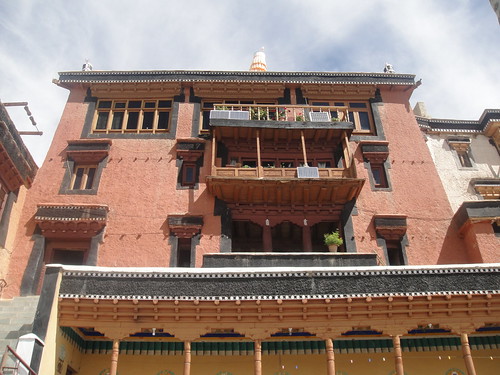On April 7, 2012, a deadly avalanche hit a Pakistani military camp in the Gayatri Sector, 30km west of the Siachen glacier, killing over 130 people, most of them military personnel. The scale of the tragedy once again brought into focus a long-standing conflict between India and Pakistan over Siachen, often referred to as "the world's highest battlefield."
| Pakistan Army rescue operation at the world's highest border in Siachen. Photo by Mohsin Hassan © Copyright Demotix (April 8, 2012) |
The frozen conflict
Since 1984, armies of both countries have engaged in military conflicts at altitudes as high as 22,000ft above sea level, at temperatures that plunge below -60 degrees centigrade. A ceasefire was agreed upon in 2003 but the conflict continues to this day, forcing both countries to deploy troops and run manned military camps/ stations in this completely inhospitable terrain. While some critics have called this a futile war, other analysts have stressed the strategic importance of this area in the geopolitics of both nations.
Since 1984, armies of both countries have engaged in military conflicts at altitudes as high as 22,000ft above sea level, at temperatures that plunge below -60 degrees centigrade. A ceasefire was agreed upon in 2003 but the conflict continues to this day, forcing both countries to deploy troops and run manned military camps/ stations in this completely inhospitable terrain. While some critics have called this a futile war, other analysts have stressed the strategic importance of this area in the geopolitics of both nations.
| Avalanche near the Siachen glacier. Screenshot of a YouTube video posted by zubahan136 |
Off and on, both sides have expressed desire to disengage and withdraw troops from the Siachen outposts. However, after the Kargil war of 1999, which saw infiltration from the Pakistan side into the Indian side of the LOC, India hardened its stand and decided against withdrawal of troops unless Pakistan agreed to sign off on the AGPL (Actual Ground Position Line) which would map the current positions of troops/outposts.
India's worry was that unless this was done, Pakistan would perhaps commit cartographic transgressions again. Furthermore, India is also worried about becoming vulnerable to possible incursions by China and therefore hesitant to give up her tactical advantage of controlling the Saltoro Ridge.
Stalled demilitarization talks
In June 2005, the Indian Prime Minister, Dr. Manmohan Singh, during a visit to the Siachen base camp at Parthapur, addressed the troops and said that it was time to make Siachen 'a symbol of peace' through peaceful negotiations, though he also asserted that there would be no re-drawing of boundaries as a result. While quite a few rounds of talks have taken place between both nations since then, not much progress has been made towards conflict resolution.
The recent tragedy of the avalanche has led the authorities in Pakistan to press for demilitarization of the area by pointing out the human cost and financial burden that maintaining these manned outposts were causing both countries.
Rafeel Wasif, a Pakistani blogger writes:
When a bomb explodes, all we ask for is the death toll; we feel a bit of remorse, discuss it, and that more or less sums up our debate. Whatever this may be, a gift or curse of humanity – we forget all with time and move on to another day. But today, this time around, I am not going to just forget. Why were our soldiers there in the first place? Why do we continue to invest so heavily in protecting a block of snow, with no human inhabitation, except the soldiers who so precariously guard it against foreign intruders?
Once more, talks are on between both countries, though the Indian Defence Minister, A.K Antony has already cautioned against expecting any "dramatic" breakthrough unless Pakistan acquiesced to the 'authentication, delineation and demarcation' of the respective troop positions on the Saltoro Ridge. Disappointment has also been expressed from the Pakistani side regarding the futility of these talks.
At pkarticleshub.com, Pakistani columnist and blogger Nazia Nazar talks about what she feels is holding back both sides from reaching a workable solution:
The answer is simple. The atmosphere of propaganda and distrust being the root cause of this issue is consistently hampering its amicable resolution. Unfortunately, the people in India take it as a symbol of Indian pride and gallantry while in Pakistan it is considered the fallout of Indian aggression, which should be retaliated in equal measure.Building trust
Nevertheless, the fact that both sides have agreed to continue the dialogue in a cordial atmosphere is seen as a step in the right direction in the realm of bilateral ties and cross-border relations. At Youth Ki Awaaz, Indian blogger Shashank Bhashkar offers some suggestions regarding what could be a possible way forward. He writes:
A border can be created along the current LOC and surveillance cameras can be set up to monitor infiltration activities. Both sides can keep their armies in such a position that they can be quickly deployed whenever the other side breaches the agreement. Having cameras will also account for documented proof for the International communities. The need of the hour is to display trust from both sides and come to a reasonable conclusion so that no more valuable human life is lost.
The next round of talks, between the Foreign Secretaries of both countries, is set for July 4th-5th. The ministerial level discussions are likely to take place in August. However, it remains to be seen if both sides continue to stick to their respective arguments - if they do, Siachen will remain a trigger for interstate conflict between India and Pakistan and the stalemate will continue. The challenge will be to find a way out of this and work towards a mutually acceptable solution to this icy conflict.
This post was first published on the ISN blog, cross-posted on Global Voices Online.
This post was first published on the ISN blog, cross-posted on Global Voices Online.



